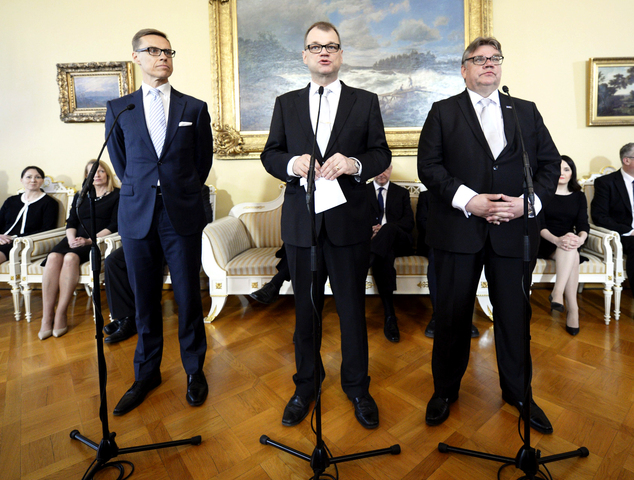By Jan Sundberg (University of Helsinki)
According to the procedure it is the biggest party in Parliament election who is given the role to form cabinet. The previous period from the last election in 2011 was a turbulent time. Ministers resigned, Left Wing Alliance left in protest, the Katainen cabinet resigned in June 2014, a new cabinet was formed led by Alexander Stubb and soon the Green Alliance resigned in protest. These two cabinets were led by the conservative National Coalition who had big problems to cope with budget deficit and escalated foreign debt and unfulfilled promises of structural reforms in health and social care. The right wing populist party True Finns and especially the agrarian Centre Party in opposition maintained a low profile as the in efficient government did the job for them. Polls shoved increase support for the Centre Party.
When votes were counted it turned out that the Centre Party was the winner and biggest party in Parliament. Also the Greens won seats and the Swedish Peoples’ Party won support. National Coalition lost seats and so did the True Finns but still they comprised the second and third largest parties. The Centre Party chairman Juha Sipilä took the role to form a cabinet. From the very beginning he signalled that the number of ministers should be reduced to 12. Katainen’s cabinet had 19 ministers and Stubb’s 17. In the end the number was reduced to 14. More important, it was evident from the beginning that the number of parties included will as well be reduced. Katainen’s cabinet included six parties in the beginning and five when the cabinet resigned. Stubb’s cabinet consisted of five parties in the beginning and four when it resigned.
Majority coalitions are strongly preferred in Finland. Few parties in majority coalition entail no room for small parties like the Greens, Swedish People’s Party and Christian Democrats. Left Wing Alliance took a stand in the campaign for more debt to stimulate the economy. By doing so they were put in off side from negotiations. The Social Democrats who suffered from the election were not in good terms with National Coalition which became evident during the last months of the Stubb government. After a long discussion with Timo Soini chairman of the True Finns and a short discussion with the other parties Sipilä announced that the new government will be created from the three biggest parties: Centre Party (prime minister party), National Coalition, and True Finns. The distribution of portfolios was dived equally between National Coalition and True Finns who got 4 portfolios each, whereas Centre Party took the remaining six.
Sipilä’s choice to include the populist True Finns got much media attention. They have a reputation of being anti EU, no financial support to EU crisis countries, strict immigration policy, partly xenophobic, to cut all aid to developing countries, against mandatory Swedish in Finnish schools to be replaced with Russian. According to them Swedish is a hinder to learn other big languages. Similar views are as well partly found among Centre Party MPs and among National Coalition members. Timo Soini was expected to take responsibility for the finances but instead he took over the portfolio of foreign affairs. The former Prime Minister Alexander Stubb was chosen to minister of finance.
During and after the negotiations Prime Minister Sipilä ensured that the three party leaders had worked in good cooperation and mood. According to the government programme several taxes will be raised, severe cuts in public service is programmed, considerable reductions are issued to schools and universities, the health and social welfare reform will be implemented, and different means to boost the economy is planned. Public spending will increase to hire more police and to strengthen the defence. A key element is to get a contract with trade unions and employers’ association during the summer. More flexibility and no wage increase is what Sipilä wants, and if an agreement will not appear Sipilä threats to implement more budget cuts and tax increases. On the other hand, if an agreement is found, tax reductions are awarded. In late August it will be evident if an agreement is found or not, and what measure Sipilä will take. In any case it is clear that the consensus politics which has characterized Finnish politics for decades is now over. The opposition which is for a more open society in terms of foreign aid, increased immigration, green values, and defence of the less affluent will act in Parliament.
Photo source:


